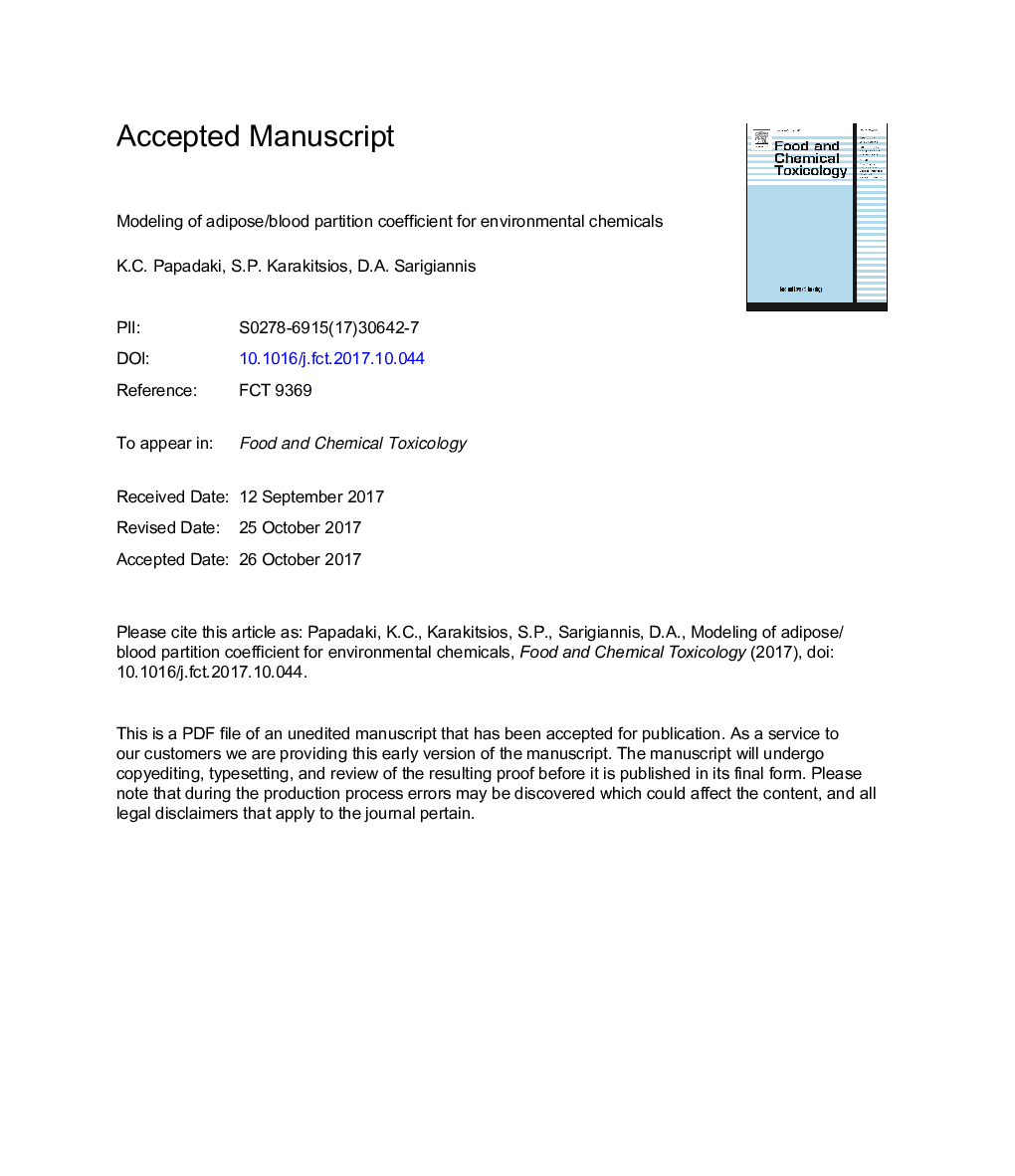| کد مقاله | کد نشریه | سال انتشار | مقاله انگلیسی | نسخه تمام متن |
|---|---|---|---|---|
| 8548613 | 1561737 | 2017 | 35 صفحه PDF | دانلود رایگان |
عنوان انگلیسی مقاله ISI
Modeling of adipose/blood partition coefficient for environmental chemicals
ترجمه فارسی عنوان
مدل سازی ضریب پراکندگی چربی / خون برای مواد شیمیایی زیست محیطی
دانلود مقاله + سفارش ترجمه
دانلود مقاله ISI انگلیسی
رایگان برای ایرانیان
کلمات کلیدی
موضوعات مرتبط
علوم زیستی و بیوفناوری
علوم کشاورزی و بیولوژیک
دانش تغذیه
چکیده انگلیسی
A Quantitative Structure Activity Relationship (QSAR) model was developed in order to predict the adipose/blood partition coefficient of environmental chemical compounds. The first step of QSAR modeling was the collection of inputs. Input data included the experimental values of adipose/blood partition coefficient and two sets of molecular descriptors for 67 organic chemical compounds; a) the descriptors from Linear Free Energy Relationship (LFER) and b) the PaDEL descriptors. The datasets were split to training and prediction set and were analysed using two statistical methods; Genetic Algorithm based Multiple Linear Regression (GA-MLR) and Artificial Neural Networks (ANN). The models with LFER and PaDEL descriptors, coupled with ANN, produced satisfying performance results. The fitting performance (R2) of the models, using LFER and PaDEL descriptors, was 0.94 and 0.96, respectively. The Applicability Domain (AD) of the models was assessed and then the models were applied to a large number of chemical compounds with unknown values of adipose/blood partition coefficient. In conclusion, the proposed models were checked for fitting, validity and applicability. It was demonstrated that they are stable, reliable and capable to predict the values of adipose/blood partition coefficient of “data poor” chemical compounds that fall within the applicability domain.
ناشر
Database: Elsevier - ScienceDirect (ساینس دایرکت)
Journal: Food and Chemical Toxicology - Volume 110, December 2017, Pages 274-285
Journal: Food and Chemical Toxicology - Volume 110, December 2017, Pages 274-285
نویسندگان
K.C. Papadaki, S.P. Karakitsios, D.A. Sarigiannis,
